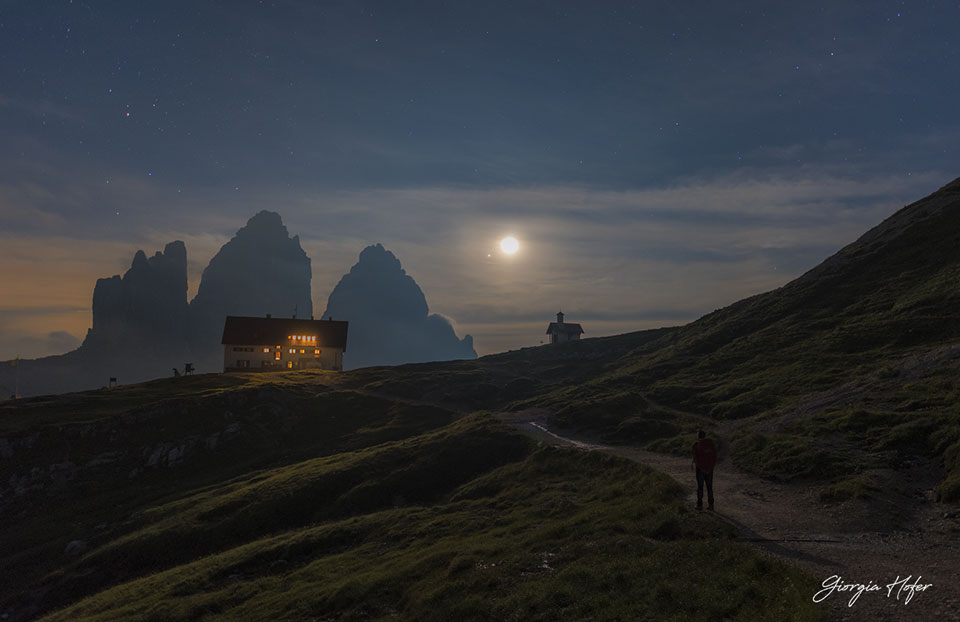
Black Hole Safety Video

Viewing a Launch From Above

Orion Rising over Brazil
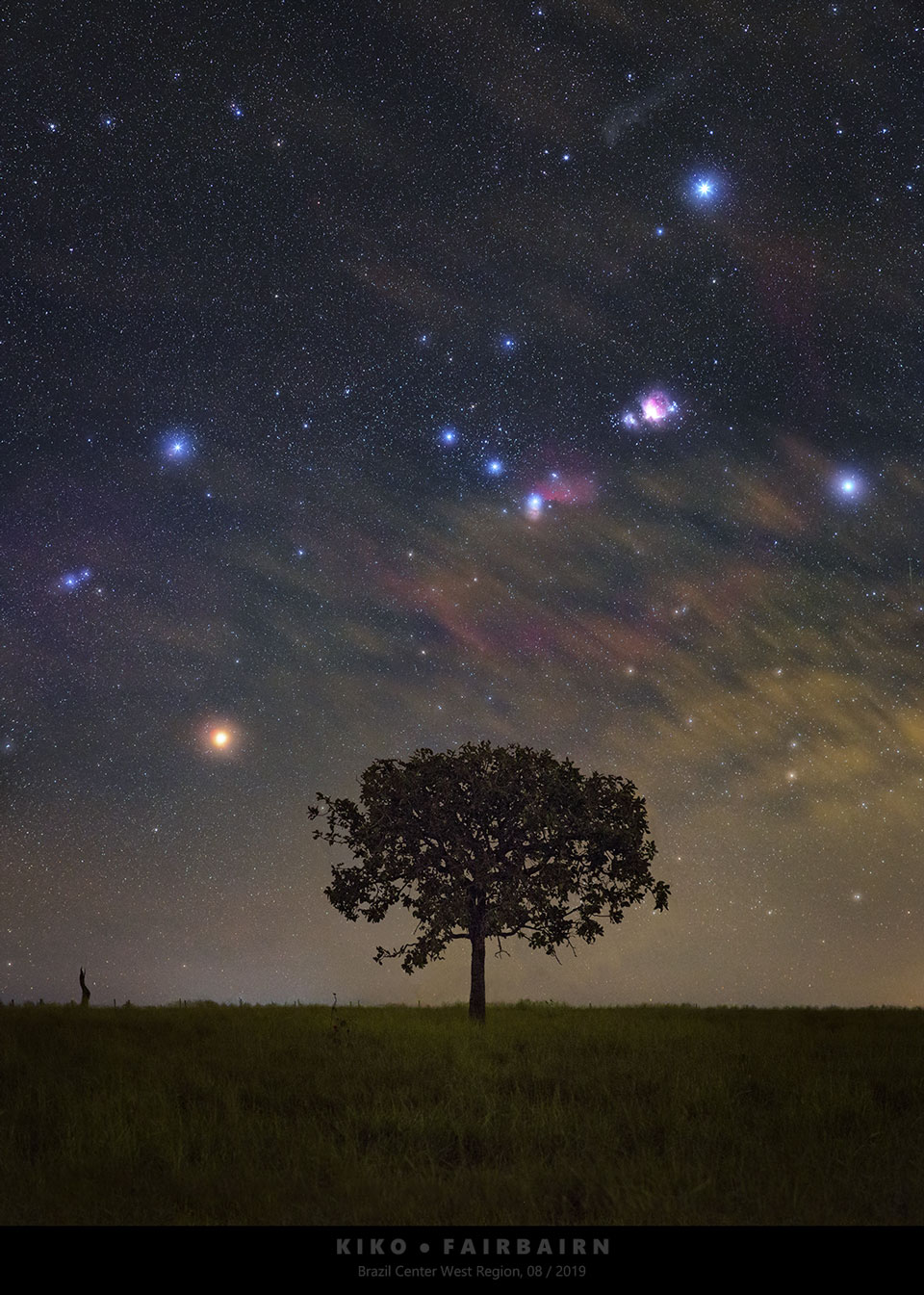
MyCn 18: The Engraved Hourglass Planetary Nebula

The Latest in a Cannabis Documentary Series Focuses on CBD Exclusively
CNN’s Dr. Sanjay Gupta’s fifth documentary on the cannabis industry, WEED 5: The CBD Craze, will premiere this Sunday, Sept. 29, at 8 p.m. ET/PT on CNN.
The hour-long film will focus exclusively on CBD and the emerging industry. Gupta published an op-ed ahead of the film’s release. He argues that lack of regulation in the marketplace can be harmful to consumers.
“Without the respect of being treated like the medicine it is, or reasonable regulation when it is purchased as a supplement, CBD has been hijacked by unscrupulous actors peddling crooked, corrupt and contaminated products,” Gupta writes. “They’re making a quick buck and disappearing into the ether without a trace.”
He cited a JAMA study that shows 69 percent of a group of 84 CBD products purchased online were inaccurately labeled.
“The legitimate vendors of CBD, who took the time to ensure consistency, safety and quality, are now sadly lumped together with the dishonest and dodgy ones, leaving the consumer confused about where to turn,” Gupta adds.
According to a CNN spokesman, WEED 5 will follow Gupta as he travels around the country to learn about the CBD industry. The film includes footage from New York City, Utah, Colorado, Virginia and South Carolina, the spokesman says.
Gupta also provides updates on families he met during his previous WEED documentary projects, including a 12-year-old girl named Charlotte Figi, who uses a CBD-rich extract known as Charlotte’s Web to treat her seizures.
“Make no mistake: Cannabis is a medicine,” Gupta writes. “Over the last six years, through countless articles and essays, and now five documentary films, my team and I have made that case and we have provided the proof. At times, it can heal when nothing else can. Denying people this substance represents a moral issue just as much as a medical one.”
The post The Latest in a Cannabis Documentary Series Focuses on CBD Exclusively appeared first on CBD Snapshot.
from CBD Snapshot https://ift.tt/2ntquPU
An Analemma of the Sun

Astronaut Candidate Frank Rubio

The Annotated Galactic Center

Finding Intermediate-Sized Black Holes

Da Vinci Rise

The Pelican Nebula in Gas, Dust, and Stars
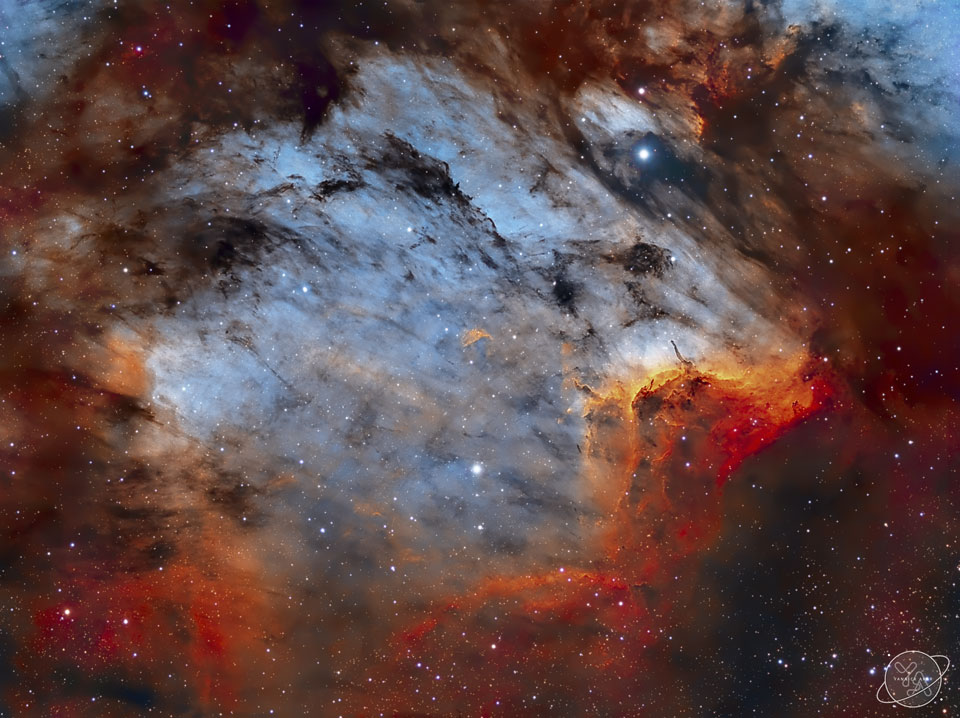
These 5 Professional Athletes Swear By CBD—Here’s Why
The CBD industry is hot—even professional athletes are jumping in. On September 5, a group of athletes including Olympic champion Gabby Douglas announced Motive CBD: a new line of CBD products to help athletes train, perform, and recover from intense physical activity.
“Motive was created by athletes for athletes and our goal is simply to keep people active and pain free,” said Corey Poches, founder and CEO of MotiveCBD. “We provide a line of consistently-tested CBD products, formulated to fit any routine, that help athletes of all ages, shapes and sizes recover from sports-related conditions.”
MotiveCBD is far from the only athlete-endorsed CBD brand. Olympians Lolo Jones and Kerri Walsh Jennings, both of whom are preparing to compete in the 2020 Olympics, have partnered with cbdMD.
In 2018, the World Anti-Doping Agency (WADA) removed CBD from its list of prohibited substances. This decision corresponded with the U.S. Food and Drug Administration’s decision to craft regulations for the sale of CBD. WADA continues to prohibit the use of “cannabis, hashish, marijuana and synthetic cannabinoids.” A reasonable observer would suppose that WADA’s regulations are similar to the FDA’s—defining CBD as the byproduct of a cannabis plant containing .3 percent or less of THC—but the regulations are not definitive.
These are just a few of the names and faces that believe in the potential of CBD.
Gabby Douglas, Olympic gymnast: uses CBD for pain relief
“My experiences in using CBD have led me to believe that I could have been more pain free throughout my gymnastics career if CBD had been allowed,” Douglas said. “I am glad that athletes across all Olympic sports will now have the opportunity to use these products and hopefully experience their benefits.”
Kerri Walsh Jennings, Olympic beach volleyball player: uses CBD for sleep
“As a mother, I’m a big fan of sleep,”Walsh Jennings said. “Implementing cbdMD’s CBD PM into my routine has improved my sleep and I definitely see a change in my overall well-being.”
Lolo Jones, Olympian athlete in track and field and bobsled: uses CBD to increase recovery speed
“I’ve always worked hard to take care of my body and be in the best shape possible, Jones said. “I’ve integrated cbdMD products into my daily routine, noticed the change in my recovery speed, and am proud to partner with them to educate others about my experience.”
Teal Stetson-Lee, professional cyclist: uses CBD to treat injuries and sore muscles
Stetson-Lee wrote on her personal blog back in 2017 about her decision to partner with
Reno-owned KYND Cannabis Company and the MYNT Dispensary. She called herself “the first ever professional athlete, cannabis ambassador in Northern Nevada.” Recreational cannabis use became legal in Nevada in 2017.
“Most professional athletes who have come out as advocates for cannabis do not do so until after their careers are over, for fear of immediate repercussions,” wrote Stetson-Lee. “That is exactly the reason why I feel the need to take this stance, while I am still in the prime of my competitive professional career.”
“As an athlete, the CBD tinctures and creams are extremely useful for injuries and sore muscles,” she added.
Judith Hagger, professional triathlete: uses CBD as a muscle relaxant“
The muscle relaxant was the main thing for me, particularly after my more intense training sessions, said Hagger, who partners with CBD company Spirit of Hemp. “I also found my sleep improved massively—I was able to really relax and recover through deeper sleep.”
The post These 5 Professional Athletes Swear By CBD—Here’s Why appeared first on CBD Snapshot.
from CBD Snapshot https://ift.tt/2mm13iF
Stuck on the Rings

Sand Dunes Thawing on Mars

Expedition 61 Soyuz Rollout

The Tulip in the Swan

Hubble Takes Closer Look at Not-So-'Dead' Neighbor

Saturn at Night
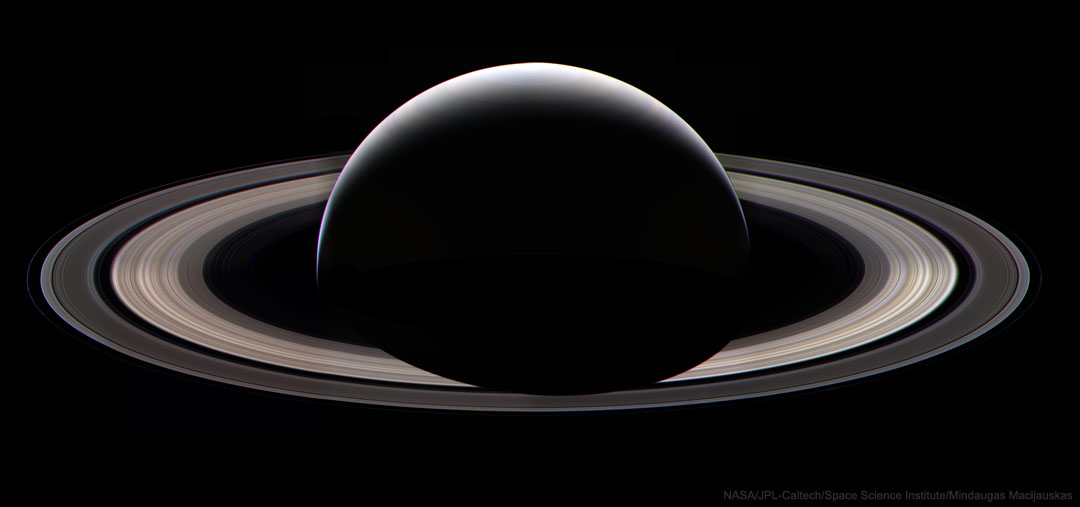
Layers in Mars' Danielson Crater

Space Station Downlink with Actor Brad Pitt

Franklin Chang-Diaz Performs a Spacewalk on the STS-111 Mission

A Long Storm System on Saturn

Here’s What We Know About CBD for Period Relief
Ask around your friends or family members and you probably won’t be surprised that many who experience a monthly period also experience the wide variety of not-so-pleasant side effects: cramping, headaches, sore muscles, tender breasts, joint pain, bloating, diarrhea, trouble sleeping and more.
For a number of years, the generally accepted way to handle these symptoms was to pop a Midol while clutching a hot water bottle. Thankfully, times have changed, and with more and more people understanding the potential pain-relieving power of CBD, many are finding actual relief from typical menstruation symptoms.
My own relationship with menstruating has (excuse the pun) ebbed and flowed throughout my life. After getting my period for the first time at age 12, I went through monthly bouts of intense cramping, sore back muscles, and nausea so bad that I would occasionally miss a day of school. I started birth control pills at 15 to help with the worst of the symptoms, but didn’t catch a break until after I gave birth and my period stayed away for a glorious 18 months postpartum. Unfortunately, it returned with a vengeance and a host of similar side effects, only this time I had more tools in my arsenal to help combat them, including CBD.
“I absolutely see it as a viable treatment option,” says Katie Stem, CEO of Peak Extracts. “CBD can be useful in treating pain, inflammation and smooth muscle spasm, all of which are present during the experience of menstrual pain and discomfort. In addition, CBD often has a calming or anti-anxiety effect, which can be useful for the emotional side of PMS.”
It might feel a bit overwhelming—especially when CBD seems to be everywhere—to find what works for you. First, take stock of your symptoms and then, with the guidance and approval of your doctor, decide which type of treatment you’d like to try, and if you’d prefer something topical, oral, or both. Stem, who has a background in health and science, prefers oral methods for faster, more potent relief.
“In my experience,” Stem says, “inhaled or oral use tends to be more beneficial, as menstrual pain is typically referring from deep in the abdomen. Tinctures, chocolates or other edibles will have an onset of about an hour, and will last four to six. Vape pens will have an immediate onset, but not last as long. Some people swear by topical application over the abdomen for cramps, and it’s certainly worth a try to see if it works for you. There aren’t a great deal of suppositories on the market, but I have heard great things about vaginal suppositories as well, which is sort of a hybrid between topical and internal use, as CBD is absorbed by the vaginal mucosa.”
Cramps, Aches and Pains
When you menstruate, your body releases hormones that cause muscles in your uterus to contract. These contractions can cause painful and uncomfortable cramps and back pain, a symptom that more than 90 percent of women with periods experience. CBD may be able to help combat this pain at the source. The cannabinoid has muscle-relaxing properties, easing the tightness of your uterus and, in turn, your discomfort.
In addition to your uterus, CBD could benefit other areas that experience soreness during your period. From tender breasts to joint pain, the influx of hormones during this time can lead to aches throughout the body. The inflammation-reducing properties of CBD may provide noticeable relief for these areas. CBD also works on your vanilloid receptors (receptors in your brain that regulate pain), which can help ease the pain you feel.
You can either rub a CBD topical into your sore spots, or take an oral dose of CBD. If you’re like me, you’ll go for the double shot of topical and oral.
Try: Moonlight Herbal Belly Balm; New Highs Tincture
Mood Swings
The influx of hormones before and during a period can often cause a rollercoaster of emotions, making feelings like anxiety, sadness, or even anger feel extra heightened. CBD has been shown to help reduce stress and anxiety, and we know it interacts with the limbic system (responsible for regulating our feelings), so taking some internally, such as a tincture, in the days leading up to your period and throughout it could help combat the extreme emotions that we can experience. For a brief pick-me-up, a topical application can be useful, especially when combined with calming essential oils.
Try: White Fox Tranquility Tincture; The Healing Rose Relax & Restore Roll On Blend
Nausea and Bloating
Stomach woes can be a monthly symptom for many, resulting in bloating, queasiness, and diarrhea. CBD has been shown to help alleviate stomach issues by regulating our bowel movements, which can be especially needed during menstruation. Also, by reducing inflammation in the bowels, CBD can help reduce bloating and feelings of nausea. Although topicals can help, oral via tincture or even inhaled CBD oil via a vape pen could help target these symptoms faster.
Try: DRAM’s Gingergrass Drops; KURED Relax OG Kush CBD Vape Oil
It is important to note that everybody’s endocannabinoid system is unique, so the way one person reacts to a certain serving size may be different than someone else. Start with a low dose and work your way up until you find what works for you. Also, make sure that the CBD product you are using is high quality, as this will provide better results.
Stem notes that there’s some evidence that in high doses CBD can compete for liver enzyme activity, which can be a concern for folks on other medications that are metabolized by the liver. “If you are on prescription medication it’s a good idea to consult with a physician or pharmacist about possible interactions,” she says.
The post Here’s What We Know About CBD for Period Relief appeared first on CBD Snapshot.
from CBD Snapshot https://ift.tt/2NVHB82
Mae Jemison Trains for Her Space Shuttle Flight

The Iris Nebula in a Field of Dust
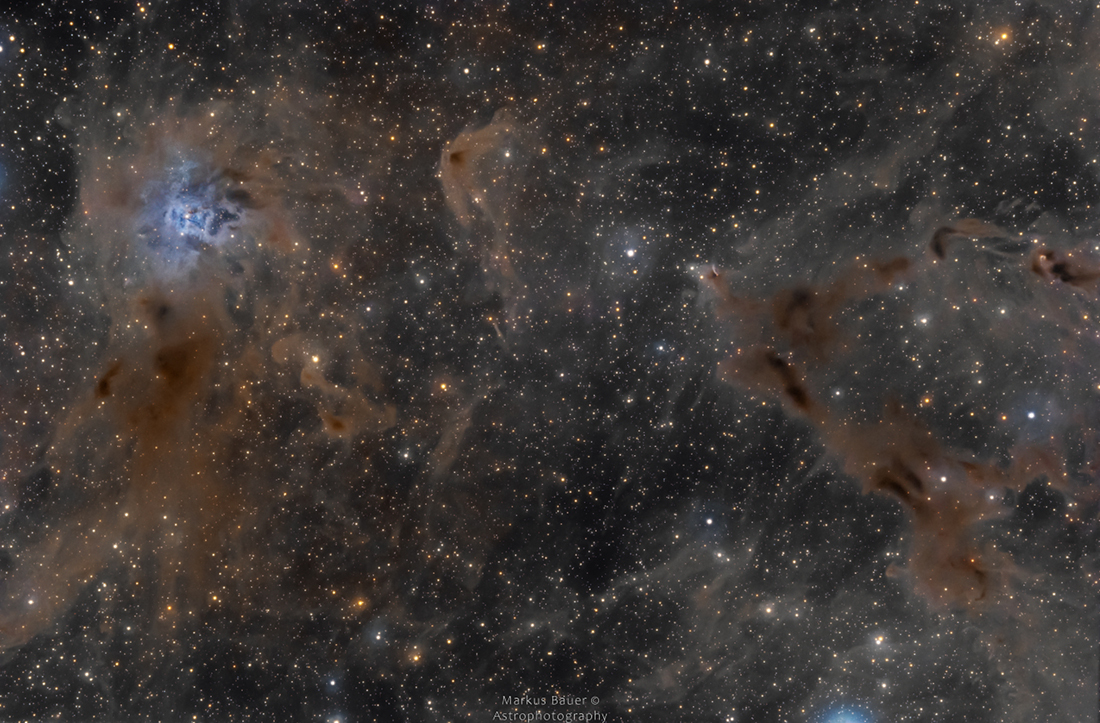
Remembering September 11th and Looking to the Future

IC 1805: The Heart Nebula

18 Hemp Crops Were Destroyed in Hawaii for Exceeding Legal THC Levels
Farmers across the nation are jumping into the hemp business. According to Farm Journal’s AgPro, legal hemp farms in the U.S. have quadrupled during 2019, compared to 2018 numbers.
Still, confusion over the legalities of hemp versus cannabis cultivation reigns.
In Hawaii, more than half of local hemp growers’ crops have been destroyed over the past year, according to an AP report, due to unlawful amounts of THC. All of the growers are participants in Hawaii’s first industrial hemp pilot program.
Hemp and cannabis issues are inextricably linked, given that both products are derived from the same cannabis sativa plant. The U.S. Food and Drug Administration has defined “hemp” as the product of the cannabis sativa plant, containing less than .3 percent THC. Higher derivations of THC legally define the plant as “cannabis.” This definition has proved problematic for hemp producers across the country.
The cultivation of legal hemp is particularly challenging in Hawaii. Shelley Choy, Hawaii’s hemp program coordinator, explained to AP, “It’s honestly expected and fairly routine in the sense that it is really hard to grow a plant that is 0.3 percent or below, and it is also really difficult in Hawaii because we have a really unique climate and photoperiod [hours of sunlight] as compared to other states.”
Recreational use of cannabis is not legal in Hawaii, though the legislature recently voted to decriminalize the possession of small amounts of cannabis (the possession of 3 grams or less of cannabis will be punished with a fine of $130 beginning Jan. 11, 2020). Current law in Hawaii makes the possession of recreational cannabis punishable with a fine of up to $1,000 and potential jail time.
The islands’ reticence to legalize recreational cannabis is noteworthy in light of the state’s cannabis culture—no fewer than 40 cannabis strains are named in honor of the Hawaiian Islands. According to the U.S. Department of Justice, some of the most potent cannabis (in terms of THC concentration), is grown outdoors in Hawaii.
Hawaiian legislators have shown definite interest in legalizing recreational cannabis, but have thus far failed to make the move to recreational cannabis.
The post 18 Hemp Crops Were Destroyed in Hawaii for Exceeding Legal THC Levels appeared first on CBD Snapshot.
from CBD Snapshot https://ift.tt/2A9ET6N
How CBD Could Help You Live as Young as You Feel
Getting older happens. And although the second half of our lives can be extremely rewarding, it also comes with its own set of issues. As time ticks by, we start experiencing a loss of vitality, little aches and pains become more persistent and pronounced, and for some, more serious health concerns become a reality.
Many older adults require prescription medications; others are taking over-the counter medicines, vitamins and other supplements to find relief from a variety of health concerns. But, with cannabidiol (CBD) getting federal legalization across the U.S., there are a growing number of seniors turning to this non-psychoactive cannabinoid to find relief.
According to a recent study by Remedy Review, 9 percent of seniors 54 and older have tried CBD for health reasons. Of those who have tried it, 51 percent said their quality of life improved, and 89 percent reported that they would recommend it to a family member or friend. The same study found that the most common health complaints spurring seniors to use CBD was for issues relating to inflammation, chronic pain, poor sleep, arthritis and anxiety with 78 percent of CBD users saying they were very satisfied with the results.
So let’s take a look at CBD usage and the associated benefits and side effects for health-related issues older adults commonly have to deal with.
CBD for Chronic Neuropathic and Inflammatory Pain
Chronic pain is roughly grouped into two categories: neuropathic and inflammatory pain. Neuropathic pain is largely caused by the release of a neurotransmitter called glutamate. Glutamate is responsible for activating neurons in the glutamenergic system, a major excitatory neuronal pathway, which cause sensations of pain.
One of the main reasons seniors experience pain relief when using CBD is because of its potential to suppress α3 GlyRs receptors, the main mechanism responsible for chronic pain. In addition, CBD may also restore the balance of endocannabinoids such as anandamide and FAAH, which are thought to play a role in blocking pain signals. Moreover, CBD activates the CB2 receptors, which suppress pain processing.
Inflammatory pain is similar to neuropathic pain but is caused by immune responses to things such as environmental stressors, toxins and infections. And unlike neuropathic pain, which is limited to neural pathways, inflammatory pain can present itself throughout the body.
As with neuropathic pain, CBD acts as an analgesic for inflammatory pain through its interaction with the glutamenergic system. However, CBD also has powerful anti-inflammatory properties, which makes it specifically suited to inflammatory pain. CBD has the ability to decrease the activity of the enzyme cyclooxygenase, inhibiting the release of prostaglandins, which is the main reason the body triggers an inflammatory response. CBD also has the added benefit of fighting inflammation and its associated oxidative stress by exerting an immunosuppressive effect on the cells that play a role in inflammation.
CBD for Dementia and Alzheimer’s Disease
Neurodegenerative disorders such as dementia and Alzheimer’s disease is thought to be associated with oxidative stress causing a loss of neurons in the brain and is believed to underlie the subsequent decline in cognitive and motor function these patients experience. In addition, scientists also implicate a range of mutant genes and environmental toxins, though the underlying mechanism is not completely known.
It’s important to understand that CBD cannot cure dementia or Alzheimer’s disease, but it may be able to help improve the health outcomes of these patients by:
- helping to reduce neuroinflammation (brain inflammation)
- working as a neuroprotectant (protects against neural damage)
- helping with neurogenesis (the process by which new neurons are formed in the brain)
- modulate the expression of Alzheimer’s Disease-related genes.
CBD for Bone Health
Erroneously associated with menopausal women, osteoporosis and low bone mineral density affects both men and women. According to the National Osteoporosis Foundation (NOF) half of all adults 50 and older are at risk of breaking a bone and should be concerned about bone health.
As we grow older, bone mineral density loss occurs silently and progressively, with bones becoming more porous and fragile over time. Scientists have found that a key contributor to a decline in bone density and health is related to an endocannabinoid deficiency in the CB2-receptors, which are present in osteoblasts, osteocytes, and osteoclasts that make up bone. Moreover, research has not only shown that CBD has the ability to target the receptors responsible for bone health, but that it may actually help enhance with the healing of fractures as well.
CBD for Sleep and Mood Conditions
Many seniors also have to deal with other types of lifestyle and psychological conditions ranging from difficulty with sleeping to anxiety and depression.
For example, many older adults report changes in their sleep patterns as part of the normal aging process. As people age they tend to have a harder time falling asleep and more trouble staying asleep than when they were younger. This often leaves them feeling tired during the day. CBD has been shown to help with sleep difficulties in a number of different ways.
Similarly, according to a Harvard Medical School report from 2019, generalized anxiety disorder is one of the most common mental illnesses affecting older adults, 60-plus. But, because older adults are more prone to the side effects of benzodiazepine medications—most typically prescribed for anxiety—it’s also very difficult to treat. CBD is a great alternative treatment option for anxiety without the side effects normally associated with prescription medications.
Although aging once evoked images of wheelchairs, old age homes and pillboxes filled to the brim with prescription drugs, CBD has the ability to change this perception. Thanks to this little cannabinoid, an increasing number of seniors are now experiencing improved quality of life, finding relief from a variety of symptoms: everything from chronic pain to sleep quality. And with CBD’s favorable safety and side-effect profile, for many seniors it may become increasingly appealing.
Aging adults everywhere can benefit from CBD oil. However, as with any other new treatment option, it is always best to speak to your treating physician or a medical professional before embarking on this journey.
The post How CBD Could Help You Live as Young as You Feel appeared first on CBD Snapshot.
from CBD Snapshot https://ift.tt/2ZS6TKP
Recipe: CBD Pumpkin Brownies
Who doesn’t love a brownie? Chocolate cookie goodness in fudge-y cake form! These brownies are not your average brownies: the base is pumpkin puree, which is loaded with fiber and tons of antioxidants, plus the almond butter is a great source of protein, which makes these brownies nutritionist-approved.
Makes 12 brownies
- 3/4 cup pumpkin puree (not pumpkin pie filling)
- 3/4 cup almond butter (or any nut butter of your choice)
- 1/2 cup cocoa powder
- 1/3 cup maple syrup
- 1 teaspoon baking soda
- 1/2 teaspoon salt
- 1 egg
- 6 personal servings CBD of your choice
- 1 teaspoon pumpkin pie spice (optional)
- 1/4 cup chocolate chips (optional)
Preheat the oven to 350 degrees F. Coat an 8×8 pan with an oil or butter of your choice and line the bottom and sides with baking paper. Using a stand mixer, combine the pumpkin puree, almond butter, cocoa powder, maple syrup, baking soda, salt, egg, CBD and pumpkin pie spice. Mix until well combined. Fold in the chocolate chips. Pour the batter into the pan and bake for 25-30 minutes. Let sit for 10 minutes, then remove from the pan using the parchment paper to lift. Either let them cool completely or enjoy right away!
The post Recipe: CBD Pumpkin Brownies appeared first on CBD Snapshot.
from CBD Snapshot https://ift.tt/3085I66
Pluto in True Color

Testing and Training on the Boeing Starliner

Learning to Track Water Using NASA Satellite Data

M31: The Andromeda Galaxy

Perijove 11: Passing Jupiter

In Wolf s Cave
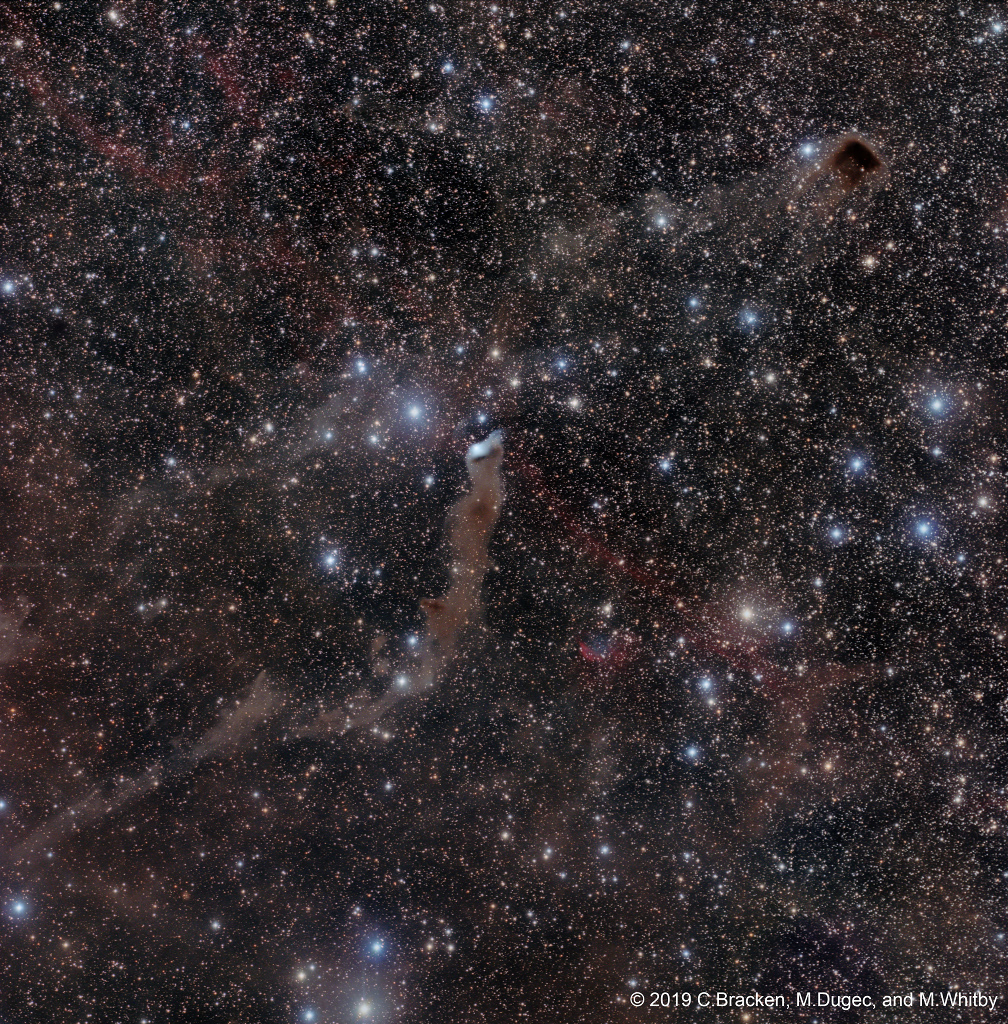
Clues for Mars in the Australian Outback

Recycling Cassiopeia A
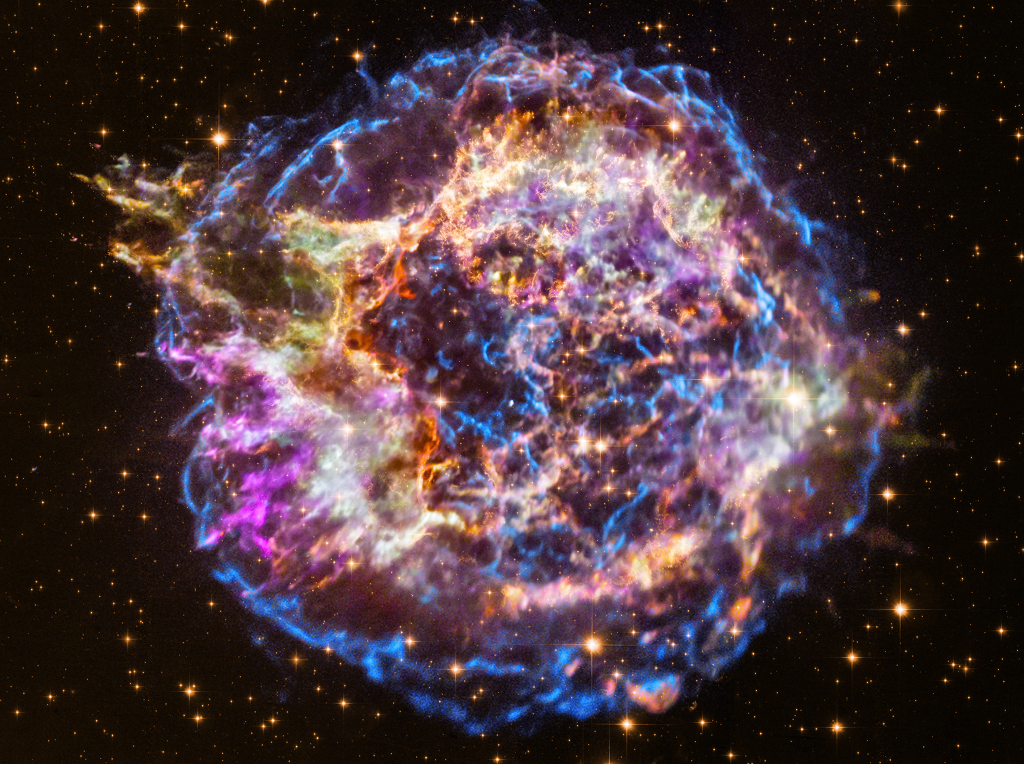
Satellite Captures Four Tropical Cyclones from Space

The Large Cloud of Magellan

Could CBD Treat Cancer? Here’s What the Science Has to Say
Among the many diseases that cannabidiol (CBD) shows promise as an effective treatment, cancer is probably one of the most far-reaching. There are two ways in which CBD can help cancer patients: First, it slows and in some cases even stops the growth of cancerous cells (treatment and prevention); and second, it helps to deal with the symptoms of cancer treatments such as chemotherapy (symptom management).
There have been many studies focussing on CBD for the treatment of various cancers. And although researchers are still exploring the exact mechanisms with regard to CBD’s effects on cancerous cells, the results are promising.
Here we explore the effects of CBD on cancer and how it may help ease the side effects of cancer treatments.
CBD for Treatment and Prevention
Although most experiments on CBD and cancer concentrates on laboratory and animal experiments, some human clinical trials exist. From this body of research, scientists believe that CBD could help treat various types of cancer via the following mechanisms:
1. Apoptosis and Necrosis (Cell Death)
Researchers postulate that the main reason CBD may help treat cancer is because it has the ability to kill tumor cells through two mechanisms: cell apoptosis and cell necrosis. In a 2011 study, scientists found that CBD may work similarly to chemotherapy through a complex interplay between tumor cell death and the destruction of the tumor cells in CBD-treated breast cancer cells. Similarly, in a 2014 review, scientists found that in both in-vitro (outside the body) and in-vivo (inside the body) studies, CBD reduces the viability of tumor cells by “programming” these cells to kill themselves off (apoptosis), while at the same time causing a toxic environment that leads to traumatic cell death (necrosis).
2. Autophagy (Cell Disposal)
Another way CBD may help treat cancer is by speeding up the disposal of dead tumor cells via a process known as autophagy. CBD seems to increase an activator called caspase-3 that moderates cell death and helps with the breakdown of the dead cancer cells. Simply put, the CBD may not only kill cancer cells, but it may also help with the dismantling of the dead cells and make their elimination from the body easier.
3. Antimetastatic Effects
Cell division is an important mechanism, helping to renew and restore our bodies. However, when it comes to tumors, this mechanism is what makes tumors grow and spread to other tissues. Scientists have long tried to target cell division (amitosis) of cancer cells as a therapy to treat cancer. They have now shown that CBD has potential antiproliferative effects, halting the cancer cells ability to metastasize . Similarly, in another study, scientists found that CBD also targets GPR12, a protein that may be involved with pathological conditions such as metastatic cancers.
4. Angiogenesis
CBD may also reduce tumor size by starving tumors of their blood supply through a process known as angiogenesis. Several studies have now shown that CBD has the ability to inhibit the growth and migration of tumor cells while simultaneously killing them off through various pro-angiogenic signals. Moreover, unlike other types of aggressive cancer treatments, such as chemotherapy and radiation therapy, CBD targets only cancer cells and does not appear to affect normal cells.
5. Decreasing LD-1 expression
CBD has also been shown to significantly decrease Id-1 expression, the gene thought to be a key regulator of the metastatic potential of several types of cancers. This implies that CBD not only helps to potentially prevent and treat cancer, but that it can particularly help control aggressive tumors through the down-regulation of aggressive tumor growth.
CBD for Symptom Management
For many cancer patients, treatments such as chemotherapy and radiation therapy can be even more debilitating than the disease itself. Side effects of these treatments include nerve and muscle pain and inflammation, nausea and vomiting as well as mood changes. There is a growing body of evidence that shows that CBD could help complement cancer treatment in several ways.
1. Pain and Inflammation
For many patients, one major issue is dealing with the pain of both cancer and its treatment. Tumors can put pressure on internal organs, cause nerve injury and result in inflammation that causes pain. Similarly, because of the way conventional cancer treatments affect both cancer and healthy living cells, these can also cause severe pain and inflammation. CBD has been shown to help reduce inflammation and provide widespread pain relief in cancer patients without diminishing nervous system function nor chemotherapy efficacy.
2. Mood
Many cancer patients often become stressed, anxious and depressed. Not only are cancer patients facing a potentially life-threatening situation, but they also have to deal with the fallout their disease has on their day-to-day lives, the lives of those around them, as well as the debilitating symptoms and side effects. CBD is believed to help reduce the symptoms of anxiety and depression.
3. Increase Effectiveness of Chemotherapy
Research into CBD and cancer indicates that it may be a complementary therapy that not only help patients cope with symptoms and side effects, but it does this without interfering with the efficacy of other medical treatments. However, a recent study found that, especially for chemotherapy-resistant glioblastomas, CBD can actually increase the effectiveness of chemotherapy. In a similar study on triple negative breast cancer (TNBC)—an aggressive disease with limited therapeutic options—researchers showed that CBD activated TRPV2-increased chemotherapy drug uptake and potentiated toxic activity in these breast cancer cells.
Using CBD for cancer is generally not accepted as an alternative treatment option for cancer, however, the limited research does show positive results for the therapeutic abilities of CBD for cancer. As with any other treatment, it’s crucial to consult your oncologist or treating physician before starting CBD.
It’s also important to use high-quality CBD—and do so regularly—to experience maximum potential benefit. Similarly, because of the cumulative effect of other cannabinoids (known as the entourage effect), a full-spectrum or broad-spectrum CBD product could be beneficial. Serving guidelines have not been studied specifically, scientists have found that 1 mg / kg of body weight per day of CBD could be effective for chemopreventive effects. If relief is not felt at this serving, the amount of CBD can be increased by 10 mg per day until desired effects are achieved.
The post Could CBD Treat Cancer? Here’s What the Science Has to Say appeared first on CBD Snapshot.
from CBD Snapshot https://ift.tt/2zOym1g
Recipe: 30-Minute Hemp Snack Balls
I’m always looking for easy, on-the-go snacks that I can have for a light breakfast or to hold me over in between meals. My criteria: it has to have protein and fiber and, most importantly, taste good. Although these certainly are not my prettiest creations, they taste delicious and have tons of healthy benefits—especially with the added boost of a high quality CBD product added into the recipe.
30-Minute Hemp Snack Balls
Makes about 30 balls
- 1 cup pumpkin seeds
- 1/4 cup hemp seeds
- 1 cup dates, pitted (about 10 large dates)
- 1 tablespoon cocoa powder
- 3 tablespoons almond butter (or nut butter of your choice)
- 1/2 teaspoon vanilla extract
- 10 servings CBD of your choice
- 2 tablespoons toasted shredded coconut for topping
Pulse the pumpkin seeds, hemp seeds, dates, cocoa powder, almond butter and CBD in a food processor until well-combined (approximately 50 seconds). The texture will be crumbly. Shape the mixture into teaspoon-sized balls with your hands. Add the coconut to a flat surface or a plate and roll the balls in toasted coconut. Place them into the fridge for 30 minutes. Store in the fridge for up to two weeks.
The post Recipe: 30-Minute Hemp Snack Balls appeared first on CBD Snapshot.
from CBD Snapshot https://ift.tt/2ZB9V6U
An Infrared View of the M81 Galaxy

Jessica Meir Climbs Aboard a Soyuz Trainer

Unusual Signal Suggests Neutron Star Destroyed by Black Hole

Hurricane Dorian Seen From Aboard the Space Station

The Moon and Jupiter over the Alps
